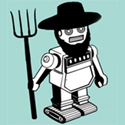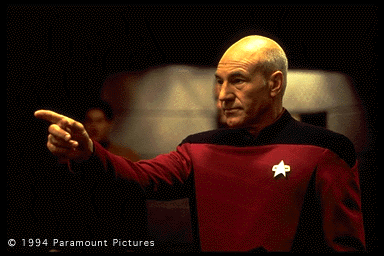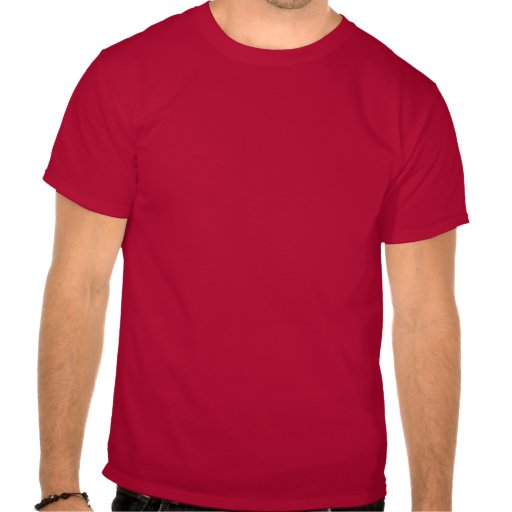The Arboreal Bipedality of Oreopithecus bambolii
Much ado is made of the mosaic of features that is Australopithecus sediba. There is, however, another hominid with an equally intriguing suite of features that existed long before Au. sediba. That hominid is Oreopithecus bambolii, and may well have displayed the very beginnings of what was to become Hominini, or at least a good model for how it may have happened (Salvador et al. 1999; Wood and Harrison 2011). This distinctive creature could hold clues to the origins of human bipedality. The origins of human bipedality may reach back to a time before primates left the trees.
Oreopithecus bambolii had a short trunk, wide thorax, long digits, with a fairly wide range of motion for its joints, meaning it was well-adapted for suspensory arborealism. However, it also had features such as a lumbar curve, a sign of bipedality. It is possible that bipedality began as an arboreal adaptation.
How well-adapted may our tree-climbing ancestors have been for bipedality before becoming terrestrial, and should O. bambolii be considered among them? The purpose of this paper is not to ambitiously propose a direct lineage of any sort. Although it would hardly be the first time it has been suggested (Klages 2011) . Rather, keeping our shared ancestry in mind, the goal is to explore the possibilities of the process by which hominin bipedalism may have arisen, aiming to show that it is entirely possible that it is a primitive adaptation from a unique kind of arboreal locomotion.
Definitions
Oreopithecus lived sometime between 6.7 and 9 Ma. (Crompton et al. 2008; McNulty 2010; Wood and Harrison 2011) (Azzaroli 1986 suggests as recent as 5 Ma., but I found no other support for such a date), roughly 5.5 Ma. before A. sediba. Due to the array of suggested dates, this paper will henceforth refer to about 7.5 Ma. and 7 – 9 Ma. when addressing its duration. This paper will use “hominid” to refer to Hominoidea, including extant apes and all of our ape ancestors. “Hominin” will be reserved for bipedal apes, also including humans, but excluding all other extant apes and our non-bipedal ancestors.
 |
| Fig. 1 Hand of H. sapiens sapiens |
The development of the dexterous human hand has often been thought of as a sign, or characteristic, of hominin bipedalism. This hypothesis is based on the understanding that standing on two feet frees the hands for such things as complex tool use (Darwin and Wilson 2006; Salvador et al. 1999). According to Charles Darwin, the human hand “would have been disadvantageous for climbing; as the most arboreal monkeys in the world...either have their thumbs much reduced in size and even rudimentary, or their fingers partially coherent, so that their hands are converted into mere grasping hooks” (Darwin & Wilson 2006, 856). The hand of O. bambolii is somewhat suited for both. While it is true that Oreopithecus had long digits that would have served well in the trees, as they do for Hylobotedea, the pollical phalanx, or thumb, of Oreopithecus is also enlarged. As is with genus Homo and Australopithecus sediba, the overall hand is shorter. Susman (2003) makes the claim, in response to Moyà-Solà (1999), that the thumb is much shorter for Oreopithecus, and thus unable to have grasped. However Moyà-Solà (2005) makes a convincing case that Susman (2003) was improperly replacing a manual proximal phalanx 3 with a pollical phalanx in specimen BA#140, as well as IGF 11778 (Fig. 2). This is made apparent by an illustration showing how the hand was recovered and “opened up” in situ (Fig. 2.d). The robusticity of the bone also indicates that it belongs to the thumb. Not only does Moyà-Solà (2005) show this in measurement, but merely looking at it shows how it (Fig. 1) Hand of H. sapiens sapiens would otherwise look oddly out of place.
One can also compare the Homo proximal pollical in Fig. 1 to that of the adult Oreopithecus in (Fig. 2) to see that they are nearly identical, where no others match.
An additional telling observation is that, as previously mentioned, the overall hand is comparatively short for its body size. Fig. 2 shows representations of the hands of an Oreopithecus and a Dryopithecus, which is accepted as representative of a true suspensory ape (McNulty 2010), of roughly equal body mass. The size difference is easy to see; the hand of Oreopithecus is overall much smaller.


Australopithecus afarensis (Fig. 3), a known hominin (Gebo 1996; Wheeler 1984), can also be compared for grasping complex similarities and contrasted to genus Pan. For example, the capitate is much larger in Homo and Au. afarensis than it is in the knuckle-walking Pan. This is also true in Oreopithecus. Evidence of stress, such as the wider fossa, looks similar to what would be expected from a grasping motion, as opposed to the resistance that would have made quadrupedal knuckle-walking difficult. Knuckle-walkers also have a crest that goes across their distal metatarsals that is lacking in non-knuckle-walkers, including Homo, Australopithecine, and Oreopithecus (Salvador et al. 1999). This is the mechanism that prevents the fingers from bending too far to the point that bearing much weight would break them. The flatness that is seen on the distal end of the proximal manual phalanges of Homo and Oreopithecus would disallow the necessary hypertension for knuckle-walking. Palmigrade knuckle-walking might have been easier, if it weren’t for the long arms (Fig. 6). It is evident that Oreopithecus was able grasp.
A grasping hand of Oreopithecus would be able to hold onto branches for an extended period of time, in a manner that would not be limited to swinging brachiation. Obligatory brachiation would also have been hampered by the greater hand-to-body ratio, meaning a comparatively smaller hand, coupled with the longer manual pollical. Although one might say An additional telling observation is that, as previously mentioned, the overall hand is that could be the tradeoff of a precision grip and handling, since brachiating ability would have suffered.
The Thorax
Since any form of long-term quadrupedalism would have been difficult, to say the least, for any great distance (see below), it would seem that the only other option for locomotion would have to incorporate an orthograde posture. The thorax of Oreopithecus shares many features, such as breadth and the scapula’s dorsal position, with extant apes, including Hylobatidae (Gebo 1996), which is separated from Homo on the family level, as opposed to the subfamily that divides Homo from Gorilla, Pan, and Pongo (Redmond and Goodall 2011). This means that it is entirely reasonable to say that these features are primitive in all of genus Homo. Along with brachiation, Hylobatidae also partake in suspensory locomotion (Gebo 1996; Fig. 4). They are not, however, known to make frequent use of vertical climbing (Gebo 1996). While extant humans are also not known to climb very often, it is certainly true that they are better at that than they are at brachiation! Gorilla (Fig. 5) and Pan (Crompton et al. 2008) also engage in vertical climbing. These forms of locomotion, including brachiation, compliment an orthograde posture.
That is not to say that a palmigrade creature is completely and absolutely incapable of suspensory locomotion. I have anecdotal evidence of having seen a prosimian at Woodland Park Zoo, in Seattle, participate in such movement. The lemur (Varecia rubra) inched its way across 2 branches to grab a piece of fruit that was hanging on another, thin, branch that another lemur was “crawling” on, but this kind of suspensory locomotion is uncommon amongst most lemurs (Hamrick 1996).

Compared to the pronograde posture of primates such as
Proconsul, the transverse processes of the lumbar are distally shorter (Crompton et al. 2008). The anterior apexes of the transverse process, at the rib joints, are dorsally placed on the vertebrae. With the curved shape of the clavicle, this may “imply that the spine was ventrally placed in the ribcage, as in modern great apes” (Crompton et al. 2008, 515). The clavicle is also similarly long and robust (Harrison 1991).
Oreopithecus also has a curved spine with 5 vertebrae, a reduction from earlier
hominids with 6, shared with genus
Homo (Harrison 1991; Kohler and Moya-Sola 1997; Williams 2011), and 5 sacral vertebrae (Harrison 1991). I am not certain as to whether the sacral vertebrae are fused or not, nor am I certain that it would have any postural relevance if they were not. There are other signs of orthogrady in
Oreopithecus, such as its relatively broad illium, the lack of tail, and the breadth and shallowness of the thorax as a whole (Fig. 6.). Crompton (2008) even goes as far as to suggest that
Oreopithecus may have been a terrestrial biped. Cockcroft (1994) writes that they were certainly terrestrial.
The Pelvis

The ilium is short and broad (Fig. 6). The iliac blades are aligned along the frontal plane and flare laterally, while the anterior-inferior iliac spine is convex and tumid. This means that hip joints would have been able to maintain stability whilst in an orthograde posture (Fig. 7). There is also a triangular depression just above the superior edge of the acetabulum, which would allow sites of attachment for femoral muscles and iliofemoral ligaments (Harrison 1991). The roughness particularly shows that they would have been well developed. The femoral shafts are also robust and surprisingly straight, with very little lateral tilting (Fig. 6). In contrast to most hominins, such as H. sapiens and H. erectus, the legs were quite short, although the femur was comparatively robust (Fig. 6). The patella groove, as can be seen on the left knee of Figure 6, is shallow and wide. Its foot appears to have been mobile and prehensile, which would have been, “ideally adapted for grasping and for providing powerful propulsive thrust during vertical climbing on large caliber supports.” (Harrison 1991, 240).
The Environment
During the late Miocene, Oreopithecus lived in the swampy island forests of Sardina and along the coast of Baccinello, during a time of inconsistent phases of alternating arid and moist environments (Delfino and Rook 2008; Russon and Begun 2004). In general, the area was largely forested with broad leaves, as well as lots of bushes, small trees, and ferns. There would have been pools of freshwater available on the island (Cameron 2004; Harrison and Rook 1997; Harrison and Harrison 1989). On the island, Oreopithecus persisted for more than 2 million years, isolated from predators (Cameron and Groves 2004). This isolation from predators would have allotted tree primates the freedom to come down from the trees to access the plethora of nutritious foods below. Moreover, being surrounded by salty water, they would have been able to, and needed to, travel from their isolated forests to the spots of freshwater. They survived through, and emerged from, what is known as the Vallesian Crisis (Koufos 2006), a time of rapid environmental change to more seasonal conditions. The warmer seasons lasted longer and were much more arid. This climatic event resulted with the extinction of many hominid species (Agusti et al. 1998). The survival of Oreopithecus was remarkable and the perseverance of the species was rewarded with ample opportunities. Because of the isolation that formed, there would have been little competition. This would have been most advantageous for terrestrial travels during arid times to make use of a variety of resources, including both food and water. This, above all else, would have been the catalyst necessary to begin exploring a new environment and try new things.
Conclusion
The change in climate set the stage for Oreopithecus to take advantage of new possibilities. There were new foods to reach for down below the trees. There was need to travel to reach freshwater resources. There was a drive for change. New skills needed to be adapted. We can see that Oreopithecus had the morphological capabilities for suspensory locomotion. Features such as a smaller hand were more than made up for by having an extended thumb that could grasp things, reaching out with long arms. Oreopithecus was a unique creature with a seemingly à la carte of features, that left them with evolutionary baggage with potential. That potential may well have been obligatory, terrestrial, bipedalism. After all, what is suspensory locomotion if not bipedalism, with a helping hand (or two)?
Bibliography
Agusti J, Andrews P, Fortelius M, and Rook L. 1998. Hominoid evolution and environmental change in the Neogene of Europe: a European Science Foundation network. Journal of Human Evolution 34(1):103-107.
Cameron DW. 2004. Hominid adaptations and extinctions: UNSW Press.
Cameron DW, and Groves CP. 2004. Bones, stones, and molecules: "out of Africa" and human origins: Elsevier Academic Press.
Cockcroft TR. 1994. Development of Hand and Foot in Hominoidea. Totem: The University of Western Ontario Journal of Anthropology 1(1):87-94.
Crompton RH, Vereecke EE, and Thorpe SKS. 2008. Locomotion and posture from the common hominoid ancestor to fully modern hominins, with special reference to the last common panin/hominin ancestor. Journal of Anatomy 212(4):501-543.
Darwin C, and Wilson EO. 2006. From So Simple A Beginning: The Four Great Books Of Charles Darwin. New York: W.W. Norton & Company, Inc.
Delfino M, and Rook L. 2008. African Crocodylians in the Late Neogene of Europe: A Revision of Crocodylus Bambolii Ristori, 1890. Journal of Paleontology 82(2):336-343.
Gebo DL. 1996. Climbing, brachiation, and terrestrial quadrupedalism: historical precursors of hominid bipedalism. American journal of physical anthropology 101(1):55-92.
Hamrick MW. 1996. Functional morphology of the lemuriform wrist joints and the relationship between wrist morphology and positional behavior in arboreal primates. American journal of physical anthropology 99(2):319-344.
Harrison T. 1991. The Implications of Oreopithecus bambolii for the Origins of Bipedalism. In: Coppens Y, and Senut B, editors. Origine(s) de la Bipédie Chez Les Hominidés: Editions du CNRS. p 235-244.
Harrison T, and Rook L. 1997. Enigmatic anthropoid or misunderstood ape? The phylogenetic status of Oreopithecus bambolii reconsidered. In: In, and Rose MD, editors. Function, Phylogeny and Fossils: {Miocene} Hominoid Evolution and Adaptation: Plenum. p 291-316.
Harrison TS, and Harrison T. 1989. Palynology of the late Miocene Oreopithecus-bearing lignite from Baccinello, Italy. Palaeogeography, Palaeoclimatology, Palaeoecology 76(1–2):45-65.
Klages A. 2011. A Critical Analysis of Hominin Morphology: The Partial Skeleton of Ardipithecus ramidus. Totem: The University of Western Ontario Journal of Anthropology 19(1):137-157.
Kohler M, and Moya-Sola S. 1997. Ape-Like or Hominid-Like? The Positional Behavior of Oreopithecus bambolii Reconsidered. Proceedings of the National Academy of Sciences of the United States of America 94(21):11747-11750.
Koufos GD. 2006. Palaeoecology and chronology of the Vallesian (late Miocene) in the Eastern Mediterranean region. Palaeogeography, Palaeoclimatology, Palaeoecology 234(2–4):127-145.
McNulty K. 2010. Apes and Tricksters: The Evolution and Diversification of Humans’ Closest Relatives. Evolution: Education and Outreach 3(3):322-332.
Redmond I, and Goodall JFRW. 2011. The Primate Family Tree: The Amazing Diversity of Our Closest Relatives: Firefly Books.
Russon AE, and Begun DR. 2004. The Evolution of Thought: Evolutionary Origins of Great Ape Intelligence: Cambridge University Press.
Salvador M-S, Köhler M, and Rook L. 1999. Evidence of hominid-like precision grip capability in the hand of the Miocene ape Oreopithecus. Anthropology 96:313-317.
Wheeler PE. 1984. The evolution of bipedality and loss of functional body hair in hominids. Journal of Human Evolution 13(1):91-98.
Williams SA. 2011. Variation in anthropoid vertebral formulae: implications for homology and homoplasy in hominoid evolution. Journal of experimental zoology Part B, Molecular and developmental evolution.
Wood B, and Harrison T. 2011. The evolutionary context of the first hominins. Nature 470:347-352.
 Here, the dogs represent the phenotypes (traits/characteristics) and the letters (The Ls and Ss) represent the alleles. If the dogs physically mate as shown, then they carry these alleles, and the result is dogs with long fur. If we look at these same genes in the lab, and physically move the alleles along the same path, and then use those genes to form puppy embryos, the result is dogs with long fur. In both cases, the genes were modified as alleles were moved from one set of genes to another set of genes. Also, in both cases, the same materials, the same genes, are being used. There are no Frankenstein Monsters here, only shaggy puppies that will require lots of brushing. Lint brush not included.
Here, the dogs represent the phenotypes (traits/characteristics) and the letters (The Ls and Ss) represent the alleles. If the dogs physically mate as shown, then they carry these alleles, and the result is dogs with long fur. If we look at these same genes in the lab, and physically move the alleles along the same path, and then use those genes to form puppy embryos, the result is dogs with long fur. In both cases, the genes were modified as alleles were moved from one set of genes to another set of genes. Also, in both cases, the same materials, the same genes, are being used. There are no Frankenstein Monsters here, only shaggy puppies that will require lots of brushing. Lint brush not included. You may have seen this graphic, to the right, used as a meme on Facebook, Twitter, Tumblr, et cetera, in the context of being snarky towards people who count themselves as part of an anti-GM movement. In another context, however, it can ring true. In fact, it could easily have come from a professor's presentation for a BIO 101 class. On the left is an image of what is likely a teosinte, one of the forerunners (more details HERE) of what we now call corn. On the right, is an image of corn, or maize, as we know it today, descended from generations of crossbreeding (more details HERE). Now, the plant on the right could have just as easily been the result of generations of crossbreeding on a farm (Artificial Selection) or in the wild (Natural Selection) as it could have been the result of choosing and splicing the same exact genes in a lab (Artificial Selection). The difference between doing it in the lab, is that you can do it in far fewer generations because you can literally see the specific genes and grab them, so there is little guesswork on how to get them to where they are wanted. All we know for certain about the image on the right is that it is the result of some form of genetic modification.
You may have seen this graphic, to the right, used as a meme on Facebook, Twitter, Tumblr, et cetera, in the context of being snarky towards people who count themselves as part of an anti-GM movement. In another context, however, it can ring true. In fact, it could easily have come from a professor's presentation for a BIO 101 class. On the left is an image of what is likely a teosinte, one of the forerunners (more details HERE) of what we now call corn. On the right, is an image of corn, or maize, as we know it today, descended from generations of crossbreeding (more details HERE). Now, the plant on the right could have just as easily been the result of generations of crossbreeding on a farm (Artificial Selection) or in the wild (Natural Selection) as it could have been the result of choosing and splicing the same exact genes in a lab (Artificial Selection). The difference between doing it in the lab, is that you can do it in far fewer generations because you can literally see the specific genes and grab them, so there is little guesswork on how to get them to where they are wanted. All we know for certain about the image on the right is that it is the result of some form of genetic modification.




































